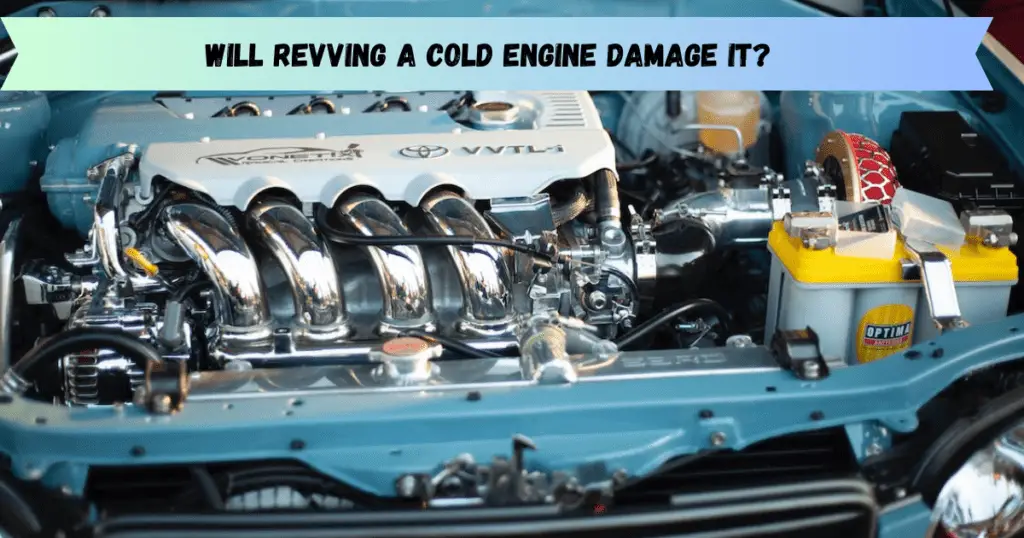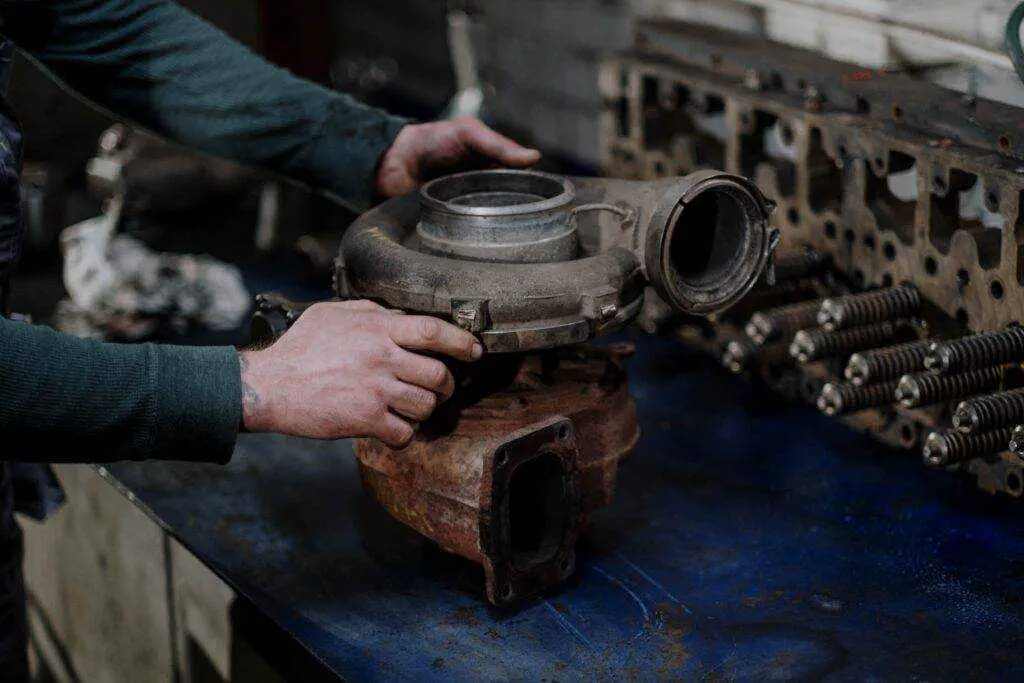A common phenomenon many drivers notice is that their car’s engine seems to have higher RPMs when cold starts. The high-revving cold engine is normal, but why does this happen? There are several reasons a cold engine needs to rev higher.
What is High Revving?
High revving refers to an engine spinning at higher than normal RPMs (revolutions per minute). Most cars idle around 700-900 RPM when warmed up. But a cold revving engine may idle from 1,500 RPM to as high as 4,500 RPM.
Revving an engine means pushing the accelerator to raise the RPMs. High revving a cold engine is common across all types of vehicles. But it’s important to know the reasons and whether high revving when cold can damage the engine.
Is High Revving Cold Engine Normal?
Yes, it’s completely normal for engines to rev higher when cold. Here are the main reasons:
- Oil viscosity – Oil is thicker when cold and flows slower. Higher RPMs help circulate the oil faster on start-up.
- Idle speed – A higher idle compensates for low battery voltage and produces more power to start systems.
- Emissions – The engine needs more air/fuel for complete combustion to heat the catalytic converter and reduce emissions.
- Stability – Cold engines run less steadily and can stall. Fast idling helps stabilize the RPMs.
So in most cases, a high-revving cold engine is nothing to worry about. The higher RPMs serve important functions and are intentional by design.
How High Does a Cold Engine Rev?
There is no set RPM that all cold engines will rev to. It depends on the vehicle and conditions. Here are some typical ranges:
- Normal cold idle – 1,500 – 2,500 RPM
- Lower end – 700 RPM (once warmed up)
- Higher end – Some engines rev up to 4,500 RPM when cold started
- Sports cars – Can rev over 5,000 RPM before settling around 900 – 1,100 RPM
The range depends on engine size, design, age, and computerized engine management systems. Many factors are involved, but anything from 1,500 – 4,500 RPM is common.
Why Does My Cold Engine Rev So High?
If your cold engine seems excessively high revving, here are some potential reasons:
Battery and Alternator Issues
A weak battery or malfunctioning alternator can’t provide enough voltage on start-up. The engine needs to rev higher to compensate and start properly. High revving compensates for the lack of voltage.
Low Idle Setting
Sometimes the idle air control valve or engine computer fails to raise idle speed when cold. This makes the engine prone to stalling, so it revs higher to prevent stalling.
Engine Problems
Issues like vacuum leaks, bad sensors, clogged air filters, or fuel delivery problems could force the engine to rev higher when cold. The extra RPMs help it run smoother.
Oil Viscosity
Very thick, old oil can slow circulation. Cold revving helps splash the oil through the engine until warm enough to flow easily.
So in most cases, high revving serves a purpose and helps during cold starting. It’s only a concern if the RPMs seem excessively high or if the issue persists when warmed up.
Will Revving a Cold Engine Damage It?
What about an intentionally High-revving cold engine? For example, revving aggressively or holding high RPMs for an extended time before driving? Here are the effects:

Increased Wear
Revving causes more friction and can accelerate wear on cold engine components. Metal parts expand when hot and have tighter clearances. So revving cold increases contact between surfaces.
Oil Splashing
High RPMs make oil splash around violently. Some can escape crankcase vapors before having time to properly coat components.
Metal Expansion
Heat expands metal. Cold parts revving at high speeds can distort slightly until reaching normal operating temperatures.
Stressing Cold Parts
Higher pressures and forces from revving act on parts like seals, gaskets, and hoses before they become pliable with heat. This adds stress and shortens their life.
So it’s generally not recommended to sustain high RPMs when cold for long periods. Letting the engine idle normally is best for longevity. Short high rev bursts may be ok, but aggressively revving when cold can certainly cause premature wear over time.
Does Revving Help an Engine Warm Up Quickly?
This is a common myth. A revving cold engine does NOT significantly warm it up faster. The main ways engines warm-up are:
- Idle speed – Higher idle RPMs circulate coolant better for some warming.
- Driving – Moving heat from combustion into the cooling system warms the engine most effectively.
- Coolant flow – The water pump and thermostat control coolant flow as the engine warms up.
- Oil circulation – Splashing and pumping oil helps transfer heat and warm components.
So normal driving warms an engine much faster than excessive revving in park or neutral. The only benefit to revving is circulating oil at very cold temperatures. But the difference is marginal. Driving conservatively for the first few miles is the best way to warm a cold engine safely.
When is a revving Cold Engine Concerning?
While cold revving is normal, take note if your engine seems to rev excessively high when cold. Here are some warning signs of an issue:
- Idling over 5,000 RPM when started cold
- High revving lasts more than 2-3 minutes after starting
- RPMs spike up and down constantly
- Engine struggles to stay running without high revs
- High revving continues after the engine is warmed up
- White smoke from revving cold
These could indicate problems like:
- Weak battery or faulty alternator
- Malfunctioning idle air control valve
- Vacuum leaks in hoses, gaskets, or PCV system
- Dirty throttle body or air intake
- Failing sensors like coolant temp, camshaft position, etc.
- Engine misfires or compression issues
- Exhaust leaks before the oxygen sensor
So monitor your cold idle speeds closely. Anything outside the normal 1,500 – 4,500 RPM range when cold may require investigation by a professional.
Tips for Safely Starting a Cold Engine
To minimize wear and safely start a cold revving engine:
- Let the engine idle normally for up to 1 minute before driving gently. Don’t rev excessively.
- Wait for idle to drop closer to normal before heavy acceleration.
- Warm up the engine by driving easier for the first 3-5 miles.
- Check the oil level – Low oil can increase cold start revving.
- Fix any engine issues causing higher than normal cold idle speeds.
- Upgrade to synthetic oil if the engine seems to rev high when very cold. Synthetics flow better at low temperatures.
- Install an engine block heater if dealing with extreme cold weather. Warming the block first reduces cold revving.
Following these tips will allow a cold engine to start safely without excessively revving or stressing components before properly warming up.
Frequently Asked Questions
Many drivers have questions about normal cold engine operation and revving. Here are some frequently asked questions:
Is it bad to rev the engine when it’s cold?
It’s generally not recommended to rev a cold engine excessively or for prolonged periods. Some revving helps circulate oil, but aggressive revving can increase wear on cold engine components before they properly warm up. Short rev bursts are ok but sustained high RPMs when cold can be damaging over time.
Does high revving damage the engine?
Yes, excessively high revving, when an engine is cold, can potentially cause damage over time due to increased friction, oil splashing out, metal expansion before being heated, and stress on cold engine parts. But the normal 1,500-4,500 RPM range for cold idle is not damaging.
What does revving it cold mean?
Revving a cold engine refers to pushing the accelerator to raise the engine’s RPMs higher than normal before the engine has fully warmed up to normal operating temperature. This causes the cold engine to spin faster than its normal idling speed.
What causes high RPM at startup?
Some common causes of higher than normal RPMs at cold engine startup are weak battery/alternator, low idle speed settings, engine problems like vacuum leaks, thick cold oil, and the need to circulate oil faster and stabilize the idle when cold.
Why do cars sound better in cold?
Cars often sound louder or more aggressive when cold because the cold, dense air creates less exhaust restriction. The engine revs higher when cold as well. This creates more engine noise and sharper exhaust tones before the engine warms up.
Why does cold start to sound better?
For the same reasons as above – the cold, dense air allows more sound to escape the exhaust. The cold high-revving engine also contributes to an aggressive tone on startup, especially for performance engines and sports cars.
How much RPM is too high?
No set RPM is too high since it depends on the engine and situation. But in general, sustained revving of about 5,000 RPM when cold or any unstable revving well above the normal 1,500-4,500 cold idle range may indicate problems.
Are high-revving engines better?
Not necessarily better, but high-revving performance engines produce more power at higher RPMs. This allows fast acceleration and response by extending the RPM range. But they require careful maintenance to handle the added stresses.
Is it OK to drive at 4000 RPM?
This depends on the engine and vehicle. Many cars are fine maintaining 4,000 RPM for brief intervals. But sustaining 4,000 RPM or high revs for extended driving can shorten engine life. Follow manufacturer recommendations for safe RPM driving ranges.
So in summary, a high-revving cold engine is very common and not damaging when within normal parameters. Look for excessively high or prolonged revving after starting that could indicate problems needing repair.
Conclusion
A cold revving engine is very normal across all types of vehicles. Higher idle speeds serve important functions like circulating oil, charging the battery, stabilizing idle, and minimizing emissions. Most cars will idle smoothly between 1,500 – 4,500 RPM when cold starts before dropping down closer to normal. While revving a cold engine aggressively or for an extended time can increase wear, normal cold idle speeds are nothing to be concerned about.
If the high revving seems excessive or lasts more than 1-2 minutes, have the engine inspected to make sure all is running properly? Follow the engine manufacturer’s recommendations, allow proper warmup before full-throttle driving, and service the engine regularly. This will minimize wear on a cold revving engine and ensure maximum performance and longevity. For more information about high-revving cold engines check this article Why is the RPM high when the engine is cold?





